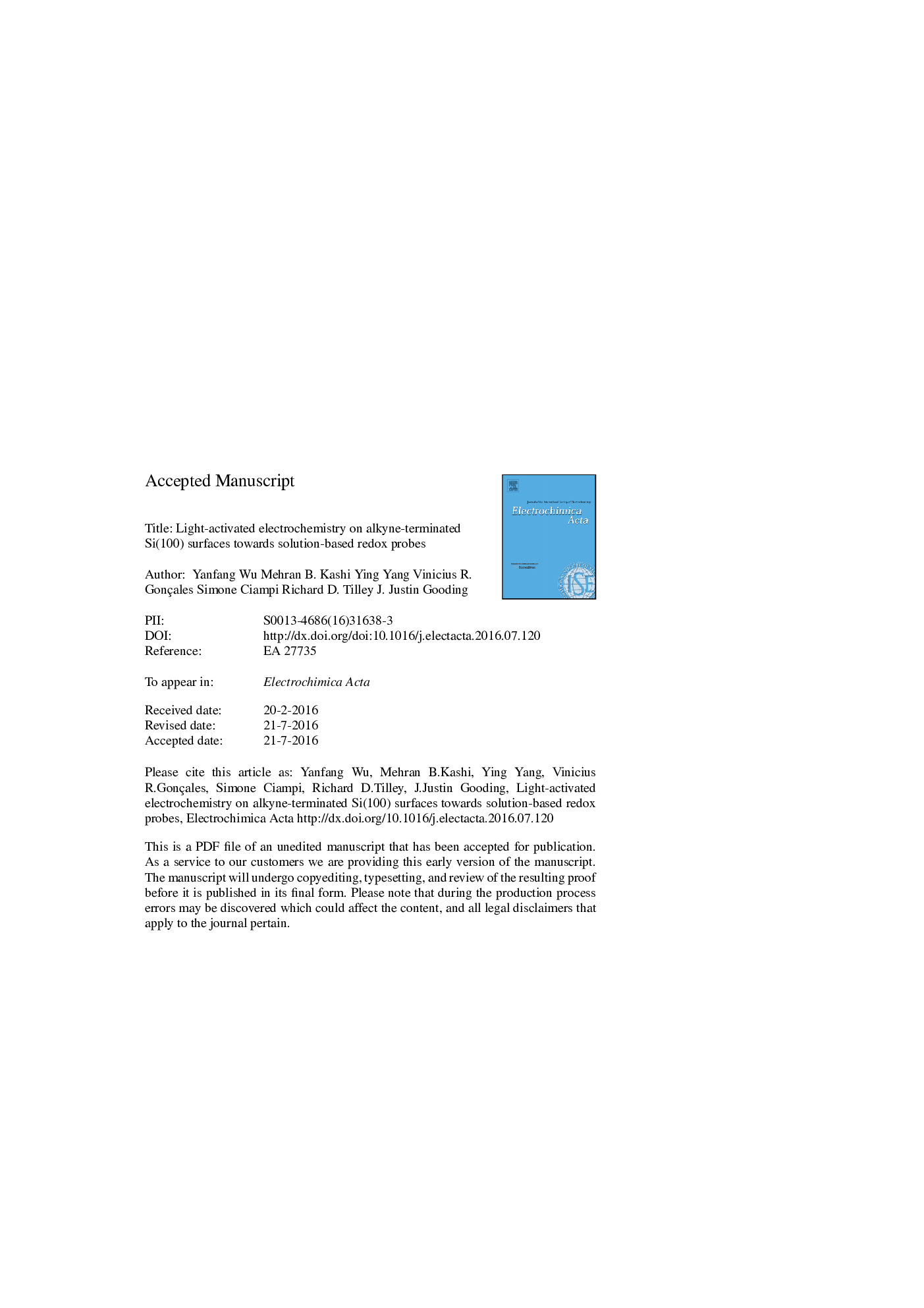| Article ID | Journal | Published Year | Pages | File Type |
|---|---|---|---|---|
| 6605807 | Electrochimica Acta | 2016 | 26 Pages |
Abstract
Light-activated electrochemistry is a powerful concept, where faradaic electrochemistry at a monolayer protected monolithic silicon electrode can be 'turned on' at any location with micron scale resolution simply by illuminating that region with light. The three requirements for light-activated electrochemistry are that i) the silicon must be protected from oxidation with a self-assembled monolayer (SAM), ii) the semiconducting electrode must be biased into depletion at the redox potential of the species of interest and iii) the redox couple must be covalently attached to the electrode. Herein it is shown that light-activated electrochemistry can be performed with solution species if they adsorb to the surface of the SAM. It is shown that redox species such as ferrocene and ruthenium hexamine adsorb onto the 1,8-nonadiyne modified silicon surface and undergo electron transfer upon illumination while potassium ferrocyanide does not. It is proposed this adsorption causes an increase in electronic coupling between the redox species and the silicon electrode such that appreciable electron transfer through the monolayer was achieved. Furthermore, it is demonstrated that light-activated electrochemistry can be used to rapidly switch between macroelectrode- and microelectrode-type voltammetry at the same interface by simple means of modulating the light intensity. This work expands our understanding of light-activated electrochemistry and its application for interrogating discrete regions on an electrode in a highly parallel way.
Related Topics
Physical Sciences and Engineering
Chemical Engineering
Chemical Engineering (General)
Authors
Yanfang Wu, Mehran B. Kashi, Ying Yang, Vinicius R. Gonçales, Simone Ciampi, Richard D. Tilley, J. Justin Gooding,
